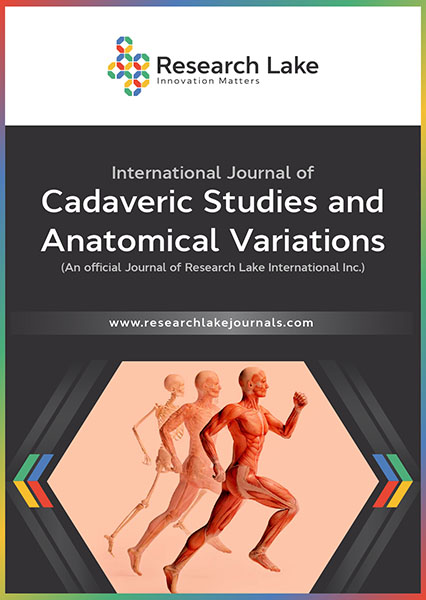Pyramidal Lobe of the Human Thyroid Gland: A Case Report
Abstract
Background
The thyroid gland is amongst the most anatomically variable structures in the human body, with incidence of the pyramidal lobe ranging from 57-65%. While these anatomical variations remain overlooked or misinterpreted by students during routine laboratory dissection, they are of clinical relevance in terms of functional disorders and illnesses associated with thyroid gland. Multiple patterns of the pyramidal lobe have been identified during routine dissections and reported in the literature. The knowledge of these pattern differences is vital for surgical practice and patient management. This is a report on a 42-year-old African male cadaver with a pyramidal lobe noticed during routine dissection in Human Anatomy Laboratory, Department of Human Anatomy of Uzima University.
Method: Dissimilarity was encountered during routine cadaveric dissections, overlying neck muscles were exposed, and the tissue was examined.
Results: The macroscopic assessment revealed a capsulated glandular tissue with three lobes. Pyramidal lobe was located deep to the strap muscles of the neck at the midline below the Adam’s apple.
Conclusion: Pyramidal lobe is considered a normal component of the thyroid gland with variable morphology and position. Its removal during surgery of the thyroid to treat non-malignant disease cases has proven to significantly reduce chances of cancer recurrence.
Copyright (c) 2022 John Juma Ochieng

This work is licensed under a Creative Commons Attribution-NonCommercial 4.0 International License.
Copyright © by the authors; licensee Research Lake International Inc., Canada. This article is an open access article distributed under the terms and conditions of the Creative Commons Attribution Non-Commercial License (CC BY-NC) (http://creativecommons.org/licenses/by-nc/4.0/).















